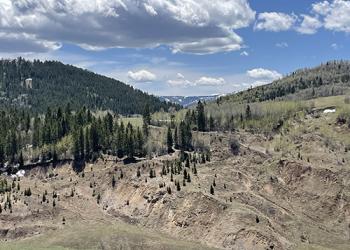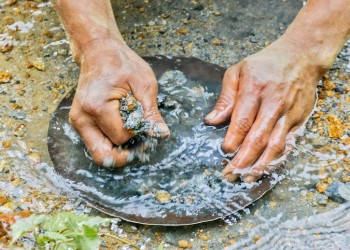Non-Wood Forest Products
Phosphate Mining
The unique geologic history of southern Idaho makes it one of the largest sources of phosphate ore in the United States, and phosphate mining has been an important industry in the area since the early 20th century. Phosphate ore is accessed and mined in the region through the creation of open pits. When excavating the ore, material overlying the phosphate-rich beds is removed. This material, called overburden, can be elevated in selenium and other potentially hazardous metals. When exposed to air and weathering, these metals can be released into the environment.
CERCLA

Our Comprehensive Environmental Response, Compensation, and Liability Act (CERCLA) efforts tackle legacy phosphate mine cleanup, restoring lands and waters impacted by past mining.
Harvesting the Wild
Beyond its timber and trails, this vast landscape offers a wealth of non-wood forest products—think berries, mushrooms, and pine cones—that invite you to connect with nature hands-on. Foraging here isn’t just about gathering; it’s a chance to taste the wild, craft from the land, and step into a tradition as old as the forest itself. Ready to dig in? Here’s your guide to foraging responsibly in Caribou-Targhee.
Foraging

On the Caribou-Targhee, nestled near the Greater Yellowstone Ecosystem, you'll find a bounty of edible medical, and craft-ready treasures. Best of all, you can harvest these for personal enjoyment without a permit-just follow the guidelines to keep the forest thriving.
Looking for Gold
The Caribou-Targhee National Forest, sprawling across southeastern Idaho and parts of Wyoming, has long been a destination for gold prospectors seeking the thrill of discovery. Gold, primarily in the form of placer deposits, has been the most significant mineral found in the forest, with historic mining activities leaving a legacy in areas like Caribou Basin and McCoy Creek. Today, prospecting remains a popular activity, blending the forest’s rich history with modern regulations designed to protect its natural resources. Whether panning for gold along a sparkling stream or operating more intensive equipment like suction dredges, miners must navigate a clear set of guidelines to ensure responsible stewardship of the land.
Prospecting

Gold mining has a rich history in the Caribou-Targhee National Forest, with placer gold prospecting drawing enthusiasts to popular areas like Caribou Basin and McCoy Creek. While panning is common and requires no specific notification, activities causing significant surface disturbance, such as suction dredging or sluicing, mandate a Notice of Intent (NOI) and potentially a Plan of Operations.


